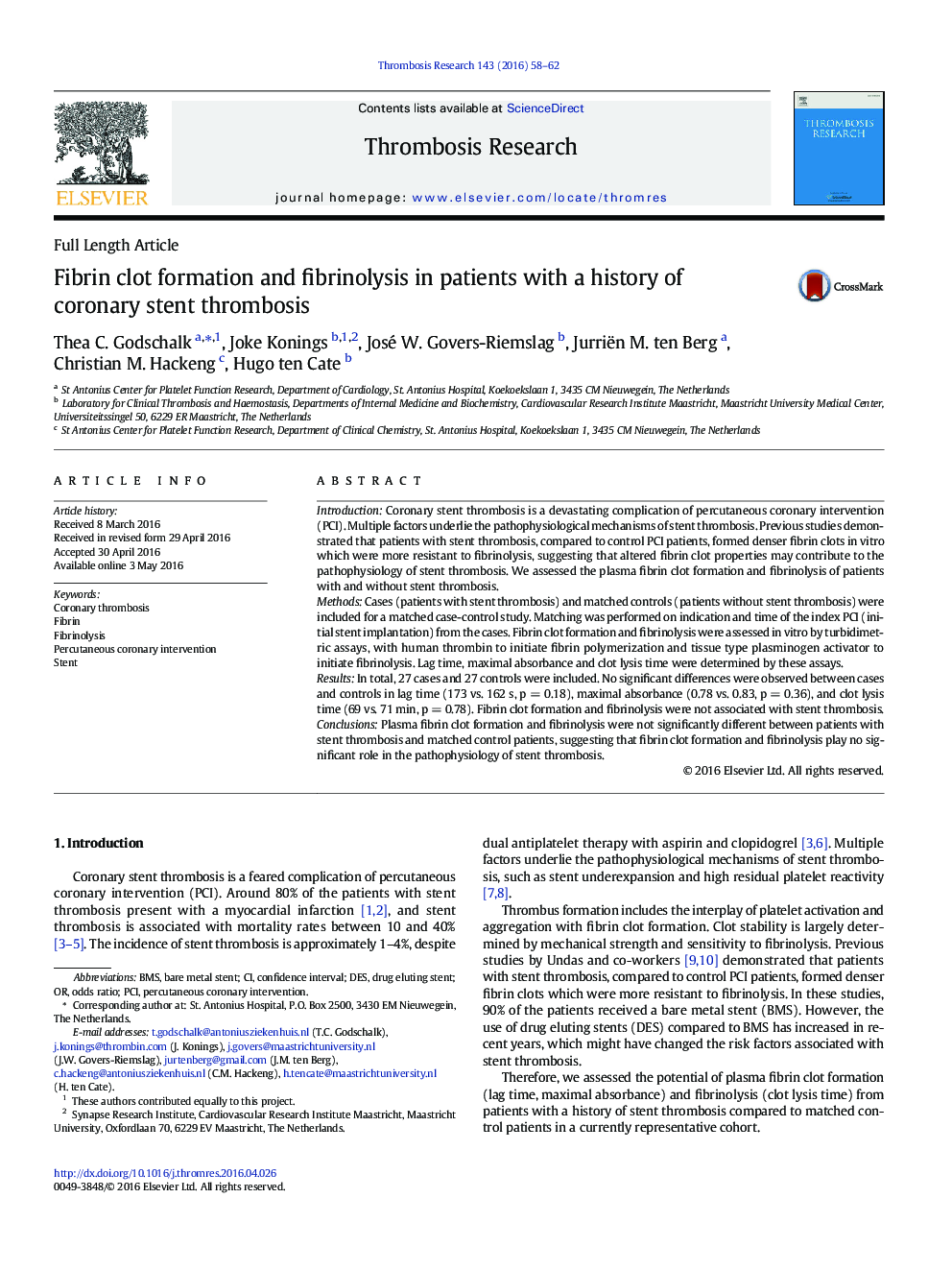| کد مقاله | کد نشریه | سال انتشار | مقاله انگلیسی | نسخه تمام متن |
|---|---|---|---|---|
| 6000383 | 1579200 | 2016 | 5 صفحه PDF | دانلود رایگان |
- Patients with/without stent thrombosis (ST) had comparable fibrin clot properties.
- Fibrin clot formation and lysis were comparable between early and late ST patients.
- Plasma fibrin clot properties play no significant role in the pathophysiology of ST.
IntroductionCoronary stent thrombosis is a devastating complication of percutaneous coronary intervention (PCI). Multiple factors underlie the pathophysiological mechanisms of stent thrombosis. Previous studies demonstrated that patients with stent thrombosis, compared to control PCI patients, formed denser fibrin clots in vitro which were more resistant to fibrinolysis, suggesting that altered fibrin clot properties may contribute to the pathophysiology of stent thrombosis. We assessed the plasma fibrin clot formation and fibrinolysis of patients with and without stent thrombosis.MethodsCases (patients with stent thrombosis) and matched controls (patients without stent thrombosis) were included for a matched case-control study. Matching was performed on indication and time of the index PCI (initial stent implantation) from the cases. Fibrin clot formation and fibrinolysis were assessed in vitro by turbidimetric assays, with human thrombin to initiate fibrin polymerization and tissue type plasminogen activator to initiate fibrinolysis. Lag time, maximal absorbance and clot lysis time were determined by these assays.ResultsIn total, 27 cases and 27 controls were included. No significant differences were observed between cases and controls in lag time (173 vs. 162 s, p = 0.18), maximal absorbance (0.78 vs. 0.83, p = 0.36), and clot lysis time (69 vs. 71 min, p = 0.78). Fibrin clot formation and fibrinolysis were not associated with stent thrombosis.ConclusionsPlasma fibrin clot formation and fibrinolysis were not significantly different between patients with stent thrombosis and matched control patients, suggesting that fibrin clot formation and fibrinolysis play no significant role in the pathophysiology of stent thrombosis.
Journal: Thrombosis Research - Volume 143, July 2016, Pages 58-62
